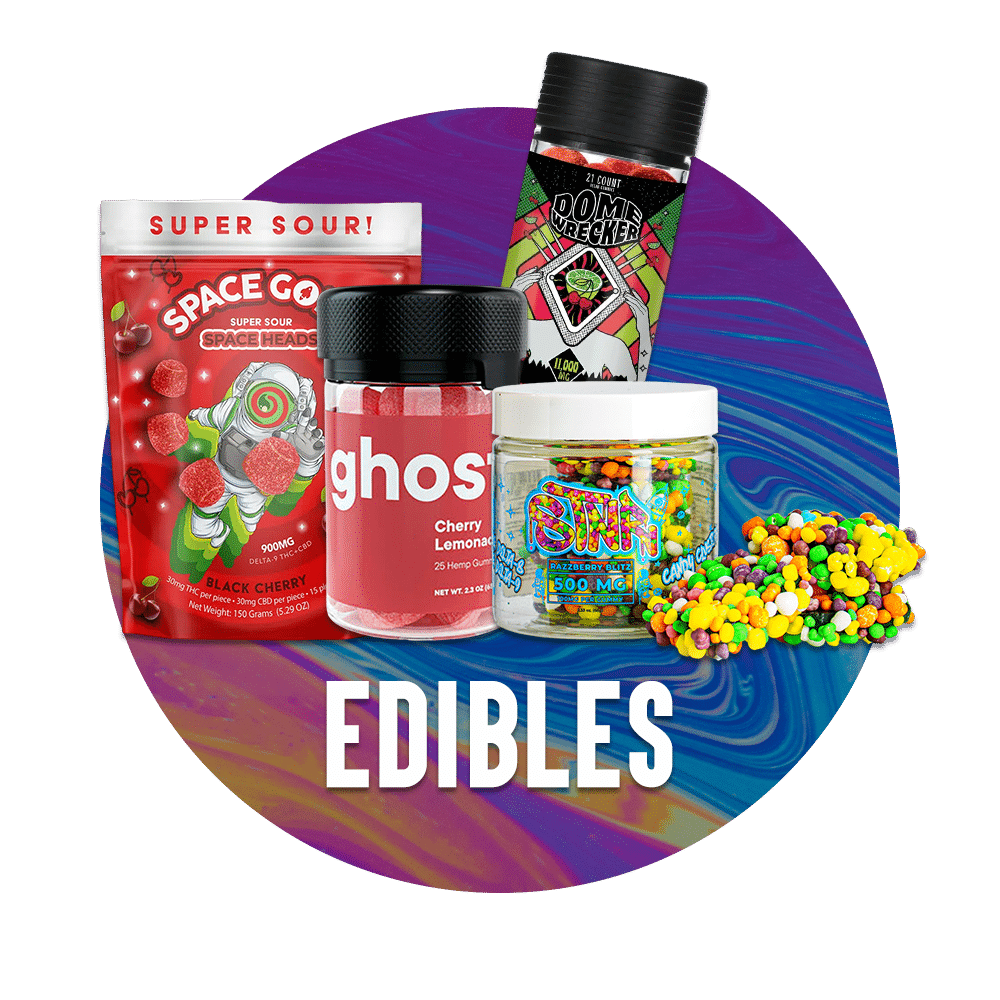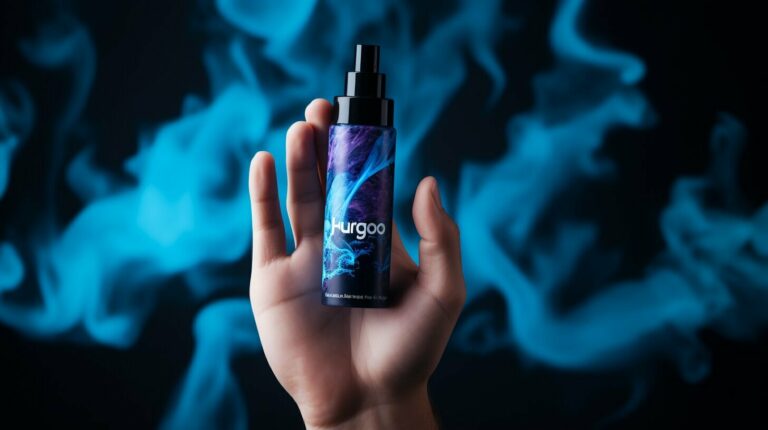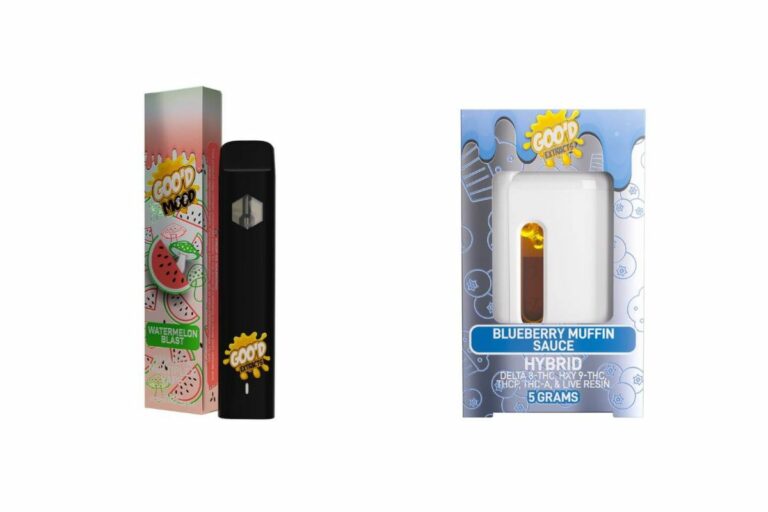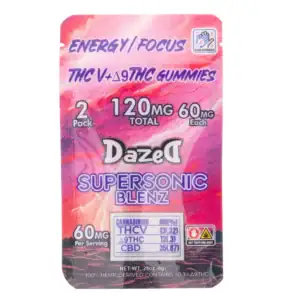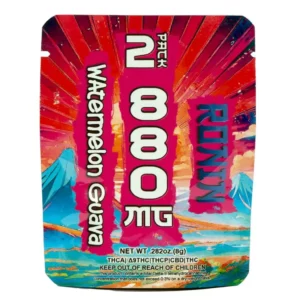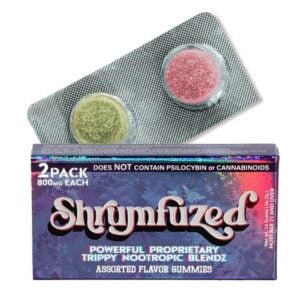Are Edibles Better for You Than Carts? A Comprehensive Comparison
The sheer number of studies that link the effect of cannabis on the body to how it is used has led to a lot of talk about how best to take it. Basically, the million dollar question is: To ingest (edibles) or to inhale? (smoking or vaping)
Vaping and ingesting through edibles are two of the main options. While new users are typically torn between both, one thing is sure: neither method is perfect. Either could be more suited to you depending on your needs and preferences.
Table of contents
In this article, we’ll make a detailed comparison between both options, taking a look at their pros and cons, and discuss which one is safer. We’ll also provide tips to guide your choice.
The risks of inhaling Cannabis
Inhaling cannabis (smoking) kickstarts a combustion process which releases tar, carcinogens, and irritants very similar to those found in tobacco smoke. These substances may cause damage to the lung tissue over some time, which may lead to wheezing, chronic coughing, or even bronchitis.
The carbon monoxide it produces can also strain the heart by limiting the flow of oxygen in the bloodstream. This is why studies have shown that smokers face the risk of heart attack, especially within an hour after use due to enhanced heart rate and blood pressure.
Thanks to smart marketing, vaping is viewed as the ‘cleaner’ alternative. But this says very little about its own dangers. While the combustion process is absent, people often forget that most vaping liquids contain thinning agents an additives (e.g. Vitamin E acetate, which can be linked to lung injuries like E-cigarette or Vaping Use-Associated Lung Injury (EVALI), which may cause life-threatening respiratory failure or chest pain).
Moreover, vaping devices can deliver a higher kick of THC than traditional smoking techniques, which can quickly lead to overdosing, in turn causing paranoia or cases of acute anxiety.
On the other hand, edibles do not require inhalation. When you swallow a cannabis-infused gummy or oil, it bypasses the lungs altogether, removing the need for any respiratory action and its risks. A downside to this, however, is the speed to action—since THC must pass through your digestive system before entering the bloodstream, it can take a lot longer to kick in. (from 30 minutes to 2 hours)
A cannabis user who experiences such a delay may find themselves taking too much, too soon, which may be risky and lead them to consume more dosage than intended. Another issue with edibles in the complex dosing. A single cookie may contain multiple servings, which would also likely increase the risk of overdosing.
In short, no method is free from risks. The effects of smoking and vaping are kick in after a few seconds. Edibles, on the other hand, trade your safety for delayed, unpredictable outcomes. Knowing these trade-offs would help you in your bid to make informed choices, helping you start low, go slow, and prioritize caution.
Edibles safer: A closer look
Without any risks to respiratory functions, cannabis edibles offer a safer alternative to smoking or vaping cannabis. Rather than through inhalation, edibles deliver cannabinoids through digestion.
When you eat CBD, the active compounds like THC bind to your cannabinoid receptors and then take a detour through your liver. Afterwards, it enters your bloodstream—a process called “first-pass metabolism,” This turns THC into a more potent form called 11-hydroxy-THC in your liver. The resulting effects slowly creep up on you (it takes about 30-90 minutes) but lasts longer (up to 2 hours in certain cases, as against the quick 1-3 hours ‘kick-in window’ in the case of vaping)
The delay could be a negative, though: A new user may mistake the delayed onset for an underdose and take more hits, leading to an overwhelming high. So, it’s best to start low (probably around 5-10mg) and then chill for at least two hours before you can consider taking more.
If you’re in a shared space or public setting, eating edibles offer more discretion in terms of leaving no traces. Your cannabis experience could be as simple as quietly popping a mint. This is unlike smoking or vaping, which may inconvenience your neighbors or random bypasses.
Understandably, edibles are better suited to medical users who need them for relief from insomnia or chronic pain. Recreational users may prefer the instant hit of vaping for short-term leisure. Both options have their pros and cons, but overall, Edibles are a safer bet if you’re new to this and want to navigate the learning curve of your dosing with a careful approach.
Dosing and efficiency

| Feature | Disposable Vape Pods (Carts) | Edibles (Gummies, Chocolates, etc.) |
|---|---|---|
| Onset Time | Fast – effects felt within seconds to minutes | Slow – effects kick in after 30 mins to 2 hours |
| Duration of Effects | Shorter – lasts 1 to 3 hours | Longer-lasting – 4 to 8+ hours |
| Dosing Precision | More control – users can take small puffs and adjust airflow | Harder to control – Delayed effects make it easier to overconsume |
| Bioavailability | Higher (~50-80%) – Direct absorption into lungs for quick effects | Lower (~10-30%) – THC is metabolized in the liver, reducing potency |
| Efficiency per Dose | More efficient per hit – Instant effect with less product | More efficient per serving – Steady, sustained high with one dose |
| Ease of Use | Very convenient – Just take a puff anytime | Requires planning – Must wait for effects |
| Health Impact | May cause lung irritation from vapor inhalation | Easier on lungs – Processed through digestion |
| Discreetness | More discreet – Little to no lingering smell | Less discreet – Effects last longer and can be unpredictable |
| Control Over Effects | Easier to control – Effects stop quickly after use | Harder to manage – Once consumed, effects last for hours |
| Addictive Potential | Higher risk – Instant effects may lead to more frequent use | Lower risk – Slow onset discourages overuse |
| Recharge/Refill | Requires battery recharge & pod replacements | No recharge needed – Just eat and enjoy |
| Cost Over Time | Higher – Frequent pod replacements & battery costs | More cost-effective per dose – Lasts longer |
| Potency Strength | Adjustable – Users can modify airflow & power settings | Fixed per serving – Harder to adjust on the spot |
| THC Conversion | Vaporized THC stays THC – Less potent but fast-acting | THC converts to 11-Hydroxy-THC in liver – More potent, longer-lasting effects |
| Best For… | Instant relief, quick highs, convenience | Long-lasting effects, strong highs, better sleep support |
Your experience of cannabis will vary depending on not only your dosing but the method you use. Edibles are infused with a defined dose — each gummy, chocolate, or baked product contains a measure of THC that ranges from 5-10mg. In this way, users (especially new users) can track their intake easily.
Like in any other worthwhile adventure, patience is rewarded here. Edibles take longer to kick since they pass a longer route (your digestive system). But in terms of the effect, it can last between 6 to 8 hours. Vaping acts almost instantly, as the inhaled cannabinoids enter the bloodstream through the lungs within seconds. This makes it ideal for users seeking quick relief.
The nuances of vaping as a technique however make dosing more tricky. For instance, other factors like vaping and inhalation techniques, and how potent the product is contribute to how much THC you absorb. Beginners are most at risk to overdo it, accidentally. However, they can take some comfort in the fact that its effects fade away faster.
Whichever method you favor, it is always wise to follow the rule of thumb, which is to start with a low dose, track your response, and if needed, gradually increase or adjust as needed. This is your best bet for a safer, more controlled journey into cannabis use.
Choosing the right option for you
When faced with both options, the best way to go about your choice would be to know how your body and lifestyle align with each option. Vaping offers you quick onset, usually within minutes, which makes it a more suitable option for you if you need immediate effects (e.g., to ease a sudden discomfort or stress.)
On the flip side, edibles are your jam if you need something more long-lasting, slower to kick in, or if your lifestyle choices do not align with being spotted openly vaping/smoking cannabis. (Both edibles and vaping could be discreet. But edibles edge out)
So, sustained relief or speed? If you’re looking to use Cannabis to manage chronic pain or insomnia, these factors should be top of mind in your decision-making process.
Your health history should also be taken into consideration. If your lungs are tender or sensitive, or you have a medical history of respiratory conditions like asthma, vaping may not be a good option for you. In such a case, Edibles are better suited.
Conclusion
As more states move to legalize cannabis, trade-offs will be key to whether edibles or vaping are the more common choice. Is any of them better? Well, that’s entirely up to you and what you want out of your cannabis experience.
Heating cannabis oil or flowers can irritate your airways and also expose bystanders to harmful by-products, also known as smoking by proxy. Meanwhile, you may need to feel the hit fast to manage a symptom — an area where edibles fall short.
The bottom line? Both are fantastic options. But your choice will ultimately depend on your body’s needs and lifestyle choices.


